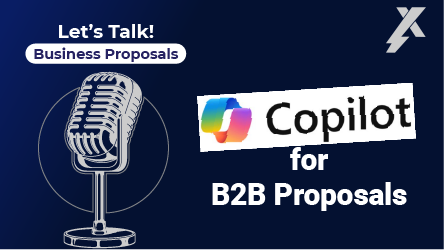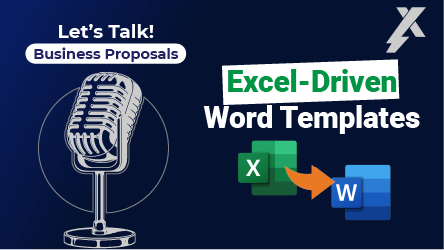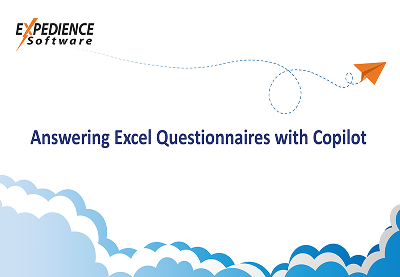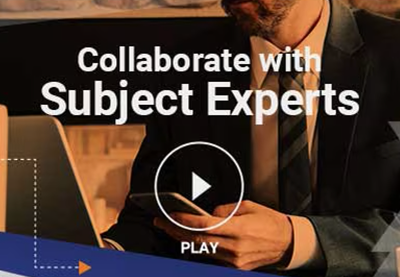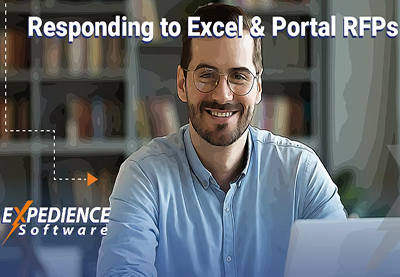Transcript
00:00:00 Speaker 1
Hi, Jason. Welcome back everybody. I’m joined here today again by Jason Anderson of
Expedience Software. Great to see everybody back. So Jason, let’s just jump right back
in. You know, there’s a lot of excitement around generative AI and Microsoft Copilot right
now. Obviously, Copilot is a super-powerful tool.
And we’ve seen a lot of what it can do in all different kinds of industries. I imagine the
people who are creating proposals took one look at these technologies and said to
themselves, Oh my gosh, I like need to have this to make my proposals. So what are
you seeing right now in terms of are people using Microsoft Copilot for their business proposals?
Are they not using it? What are the details on that? We’d love to know.
00:00:46 Speaker 2
Great. Thank you. Hi, Meghan. It’s a great question. I’m seeing a lot of all of that, a
lot of folks have immediate excitement around GenAI and whether that was ChatGPT
or now a lot of them are now moving over to Copilot as well as it’s directly within the
office suite. They may be using a mixed bag, though. Some folks have tried it a little,
and some people have played with it a lot. But I would say it’s still very much an emerging technology and people are still getting their heads around it. So many have investigated but few are really, really deploying the technology like it will be more so deployed tomorrow.
00:01:18 Speaker 1
And though for those people who are using Copilot in their proposals, what are you
seeing them use it for exactly?
00:01:25 Speaker 2
Most often it’s generative capability, right? It’s it’s they used ChatGPT at one time where
they brought a prompt out, they asked it to create something and it helped them make
content. That seems to be the bulk of the scope that I’ve seen proposal professionals
play with, with the Copilot and creation of new proposals.
00:01:43 Speaker 2
Feels that is changing though, and the opportunities to stretch beyond that, that use
case are being explored right now by lots.
00:01:51 Speaker 1
Are you feeling like people are finding it in general? Really helpful. Is it more helpful
than, you know, frustrating. Like, what are people seeing when they go to implement it
into their proposals right now?
00:02:04 Speaker 2
It’s a great question. Most of the times this is a garbage in garbage out challenge where
folks have struggled with the output from Copilot. Especially. I’ll just focus on Copilot for a
moment and some of that has to do with the fact that Microsoft, when they approached waving out the solution the software came in waves and waves of functionality to different users at different times and and it’s evolved rapidly. So some people that played with it even just a few months ago or
tested or explored Copilot and proposals a few months ago might have been very
frustrated with or were underwhelmed with the output that they were receiving, and that’s rapidly
changing that the outputs have gotten much more impactful, but also the approach that people have taken out of how to use it has really mitigated some of the challenges that they had initially or they might have experienced initially with Copilot.
00:02:55 Speaker 1
And what are those challenges specifically? Can you give any examples for people?
00:02:59 Speaker 2
Yeah, sure. Sure. So hallucinations or made-up content where Copilot
might have created something that was inaccurate. Likewise unfocused output
where Copilot has an amazing capability of looking throughout your network
throughout SharePoint or other sources, meeting notes, other sources and gathering information, having a poorly focused prompt, a poor data set to use to retrieve information from have both reduced the the quality of those outputs as the challenges people have have experienced, and that’s largely how
they’re being mitigated today as well. They’re taking a different approach to using
Copilot and proposals.
00:03:40 Speaker 1
How exactly are people mitigating that? Seems like that would be a challenge in and of itself, and
any details you can provide to people, I’m sure they would love to hear how people are
going through that challenge.
00:03:51 Speaker 2
Absolutely prompted engineering is the phrase of the day right? But the idea
of creating very well established prompts that have several methodologies that are now
emerging around establishing a prompt with the proper context and establishing a great
role for the AI tool to then understand how and what to produce. But more than anything, it’s sort of grounding. It’s grounding is providing to Copilot, those source material documents. Information that you want it to use to gather and produce for you the results. If you’re not familiar with the term agents, although many people are now, you can create Microsoft Copilot agents in SharePoint and what that is is you can think of it like a folder in SharePoint that has just the information you put in that folder, right? And so you can focus Copilot to an agent and the agent can have instructions and rules at the agent level, so it’s a great prompt and then leveraging agents. So I’ll give you a quick example as to how people are using it and the bulk of people are using Copilot now to just create new content, but there’s a
lot of strategic leveraging, a lot of exciting things that people are using Copilot now to drive the strategy, so if you’re responding, for example, to an RFP where customers issued you a request for proposal and you need to run a process, for example, to decide whether or not you bid on the work, or to potentially create instructions for your contributors. Maybe establishing win themes. These are things that you can have an agent that has a source of specific information, such as our differentiators, the way we win business, our strategic alignment, the types of business we try to focus on, the kinds of clients we have today and Copilot can use that information then to guide really awesome
results. So how are these challenges being mitigated? It’s through great prompts. And through use of agents that can then further refine and really direct the results out of Copilot.
00:05:51 Speaker 1
Wow, that’s awesome. And it it sounds like the copilot of today is not exactly the
Copilot of even like a month ago. From what you’re describing. To sum it all up, is there anything in particular you want to stress upon people to take away from this topic? I’m so glad we’re talking about this today and it’s a big topic and it’s nice to boil it down for people so they have a good take away from today. Anything in particular?
00:06:18 Speaker 2
Absolutely. I’ll tell you first, if you’ve used Copilot and found it to be less than helpful to
your point, it’s a different tool today than it was just days ago. It seems so.
So definitely return retry. Keep going back to that well. And if you’ve not yet started to
explore the use of Copilot. It’s a secure platform. A lot of misconceptions, and I’d like to
have another discussion. Maybe on that topic around misunderstandings of the risks or the concerns or how to use so we can dig deeper into those topics. But if you’ve tried it before and were
underwhelmed or saw a flash of inspiration, but then once you started peeling back the
onion, you were disappointed. Go try it again. If you’ve not tried it, it’s absolutely time to
start exploring how Copilot could be used in your proposal processes in really smart and
effective ways.
So that’d be my take-away.
00:07:08 Speaker 1
Awesome. Yeah. So listen everybody. He’s the expert on the topic. Try it again.
Use that technology for your proposals and the sky’s the limit. Thank you so much, Jason. I really appreciate your time. And we will definitely end on that. We’ll have more conversations
about that in the future.
00:07:20 Speaker 2
Thanks, Meghan.

